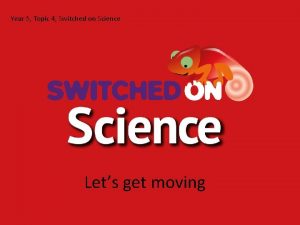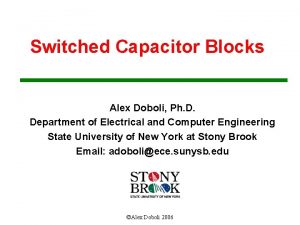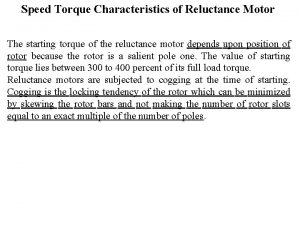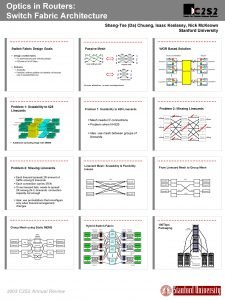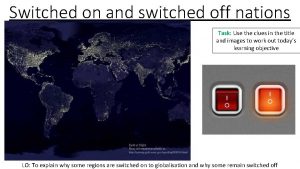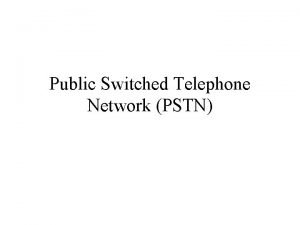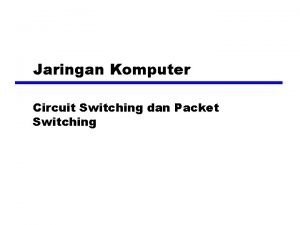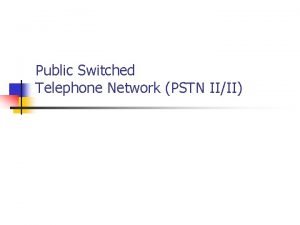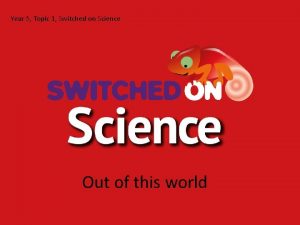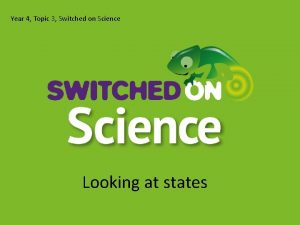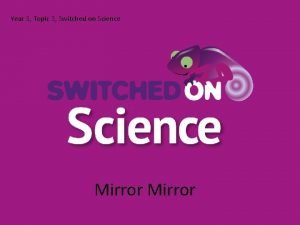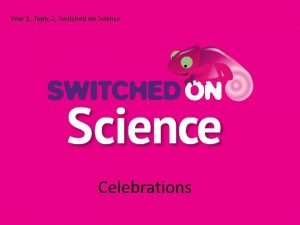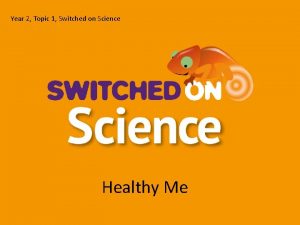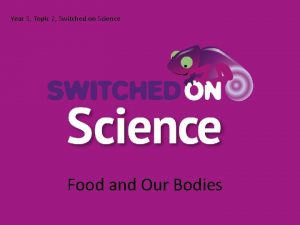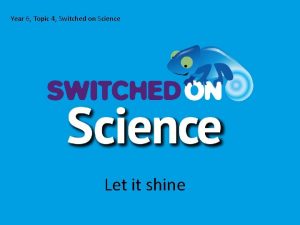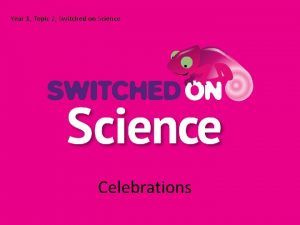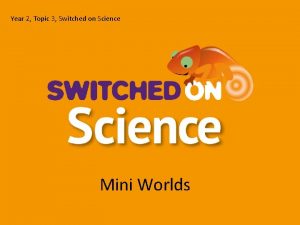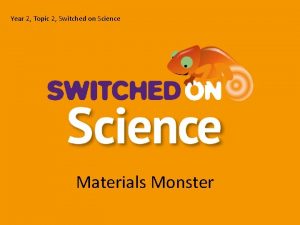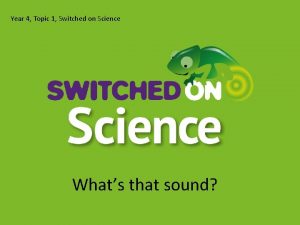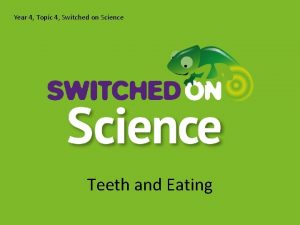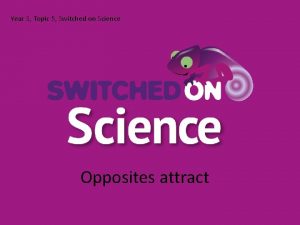Year 5 Topic 1 Switched on Science Out




















- Slides: 20

Year 5, Topic 1 , Switched on Science Out of this world

In this topic you will: • Learn how the planets in our Solar System are organised. • Use mathematics to make a model of our Solar System. • Describe the motion of the Earth and Moon around the Sun. • See how evidence can support a theory. • Describe how the Moon orbits the Earth. • Use a scientific model to explain an idea.

Key vocabulary • • • Axis Centric Day Geocentric Heliocentric Month Moon Night Orbit • • • Phases Planet Solar System Space Star Sun Timeline Time zone Year

Did you know? • You are travelling on Earth through space at the speed of 107, 218 kph. • It is impossible to land on Saturn’s ring because it consists of millions of pieces of ice, dust and rocks scattered around the planet. • Some people today still believe that the Earth is flat, the Sun moves around the Earth and we are at the centre of the universe, despite all the evidence that says this is false. • Galileo believed that the Sun was not just the fixed centre of our Solar System but the fixed centre of the whole universe. We now know that the Sun is not the centre of the universe and that it does move. • You don’t feel the Earth spin because you, the atmosphere, skyscrapers, and everything else are spinning along with the Earth at the same constant speed.

The Sun and the planets The eight planets in the solar system are: • • Mercury Venus Earth Mars Jupiter Saturn Uranus Neptune

Remembering the names of the planets A mnemonic is a made-up sentence that helps you remember a list of words. The first letter of each word gives you the clue to what the first letter of the word you need to remember is. My Violent Evil Monster Just Scared Us Nuts Mercury Venus Earth Mars Jupiter Saturn Uranus Neptune

Stepped pages Fold over cover. Stapled to hold the folded edge.

Which is the odd one out? What are your reasons?

A fruity model of the solar system 40 cm Peppercorn – Mercury 70 cm Cherry tomatoes – Venus 1 m Cherry tomatoes – Earth 1. 5 m Blueberry – Mars 5. 20 m Watermelon – Jupiter 9. 5 m Grapefruit – Saturn 19 m Apple – Uranus 30 m Orange – Neptune

The spherical earth We now know the Earth is spherical because: • Astronauts have flown around it and taken photographs. • At sea, you can see high mountains before low ground because the Earth curves. • The Earth appears as a sphere from space, no matter where you are looking from.

The flat earth Around 400 BC, the Greek Herodotus drew his view of the Earth. It was flat and surrounded by water. To him it represented all the known Earth. Why would anyone think that the Earth was flat?

The geocentric model In this model: • the Earth is at the centre of the Universe • the Earth is stationary and does not move • eight spheres surround the Earth • these spheres contain the Moon, Mercury, Venus, the Sun, Mars, Jupiter, Saturn and the stars. People thought this model to be true because, as you look towards the sky, it appears that everything moves around the Earth. The Earth is solid, and you cannot feel it moving. Since it is still, they believed that everything else must move round it.

Famous astronomers: Nicolaus Copernicus • This astronomer (1473– 1543) made accurate observations of the Moon and planets. • He used mathematics to show that their movements could be much better explained if you put the Sun at the centre of the Solar System. • How do you think his observations could be used to prove that the Earth was not flat?

The heliocentric model In this model: • the Earth is one of seven planets that are circling a stationary Sun. • the Earth moves in two main ways: it rotates every day causing day and night and it moves around the Sun once a year. • How is this different from the geocentric model of the Solar System?

Famous astronomers: Galileo • Galileo (1564– 1642) used telescopes to show that Jupiter had its own moons. • He championed the idea that the Sun was at the centre of the Solar System. • Why was the Catholic Church so angry with Galileo?



Evidence for a month This diagram shows what the Moon looks like to us from the Earth over 28 days. Use this diagram to explain why this is good evidence for the Moon taking a month to orbit the Earth.


Moon craters How will you carry out a fair test? What will you change? What will you keep the same? What will you measure How will you record your measurements? Do you think you need to repeat readings? Why?
 Advantages and disadvantages of circuit switching
Advantages and disadvantages of circuit switching Switched on science
Switched on science Switched on science
Switched on science Songs with poetic techniques
Songs with poetic techniques My favourite subject is c
My favourite subject is c Clincher sentence
Clincher sentence Topic about internet
Topic about internet Switched digital video
Switched digital video Ascxx
Ascxx Torque speed characteristics of switched reluctance motor
Torque speed characteristics of switched reluctance motor Switched fabric architecture
Switched fabric architecture Introduction to wide area networks
Introduction to wide area networks Backbone network design
Backbone network design Why is north korea switched off from globalisation
Why is north korea switched off from globalisation Switched ethernet vs shared ethernet
Switched ethernet vs shared ethernet Switched capacitor dc-dc converter
Switched capacitor dc-dc converter Public switched telephone network diagram
Public switched telephone network diagram Circuit switched networks
Circuit switched networks Spstn
Spstn Public switched telephone network diagram
Public switched telephone network diagram Pstn
Pstn

